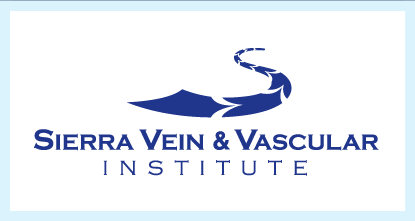Perforator Closure
Treating the Venous Ulcer (Perforator Veins)
In the United States it is estimated that up to 1.8 million people are afflicted with venous ulcers which are the most common chronic wounds treated in wound care centers. More than half of the venous ulcers treated are recurring ulcerations, or wounds that might have healed before, but later return.
Conventional treatments for venous ulcer patients include the use of antibiotics, salves, and compression therapy. But these treatments have often resulted in high failure and recurrence rates.
Attempts to heal the skin without correcting the underlying venous insufficiency can lead to a delayed ulcer healing and recurrence.
The Radiofrequency Thermal Ablation stylet allows our practice to offer you a minimally-invasive option to traditional surgery for the venous ulcers on your legs. It is the only endovenous ablation device specifically cleared by FDA for the treatment of incompetent perforating veins, the most common origin of your leg ulcers. This outpatient treatment can be either the primary procedure or it can be performed in addition to another outpatient leg vein closure procedure, using the Radiofrequency Thermal Ablation catheter, when chronic venous insufficiency disease of your large saphenous veins has been diagnosed.
Click to view a short video about Perforator Vein Ablation Procedure
1. Barwell JR, Davies CE, Deacon J, et al: Comparison of surgery and compression with compression alone in chronic venous ulceration (ESCHAR study): Randomised controlled trial. Lancet. 2004; 363(9424): 1854–1859.
2. Poblete H, Elias S: Venous ulcers: new options in treatment: minimally invasive vein surgery. Journal of the American College of Certified Wound Specialists (2009); 1: 12–19.
3. Obermayer A, Gostl K, Walli G, et al. Chronic venous leg ulcers benefit from surgery: long term results from 173 legs. J Vasc Surg 2006; 44: 572-579.
4. Nelzen O, Fransson I. True long-term healing and recurrence of venous leg ulcers following SEPS combined with superficial venous surgery: a prospective study. Eur J Vasc Endovasc Surg 2007; 34: 605-612.
5. Zamboni P, Cisno F. et al. Minimally invasive surgical management of primary venous ulcers vs. compression treatment: A randomized clinical trial. Eur J Vasc Endovasc Surg 2003; 25: 313-318.
Radiofrequency Thermal Ablation or Chemical Ablation treats leg veins in the superficial and perforating systems that have venous reflux, the underlying cause of varicose veins. Patients with thrombus (blood clots) in the vein segment to be treated should not have the Radiofrequency Thermal Ablation or Chemical Ablation procedures. Individual results may vary based on each patient’s condition. As with all medical procedures, potential risk and complications exist including vessel perforation (when the catheter punctures the vein wall), thrombosis, pulmonary embolism (when a blood clot travels to the lungs), phlebitis (inflammation of the vein), infection, nerve damage, arteriovenous fistula (an abnormal connection between an artery and a vein), hematoma (bruising), and skin burn. Consult with a physician to receive more information).



